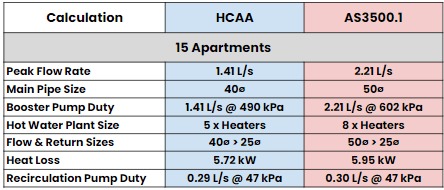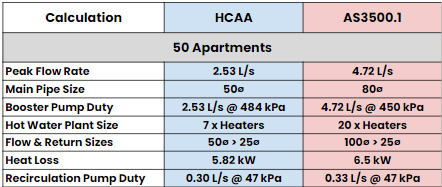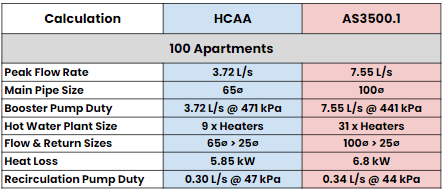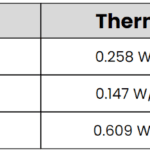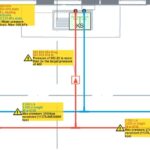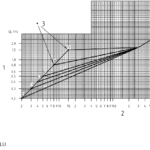
The Deakin University and HCAA Peak Flow Rate Calculation Method
Discover the efficiency of the Deakin University and HCAA hydraulic method for peak flow rate calculation.
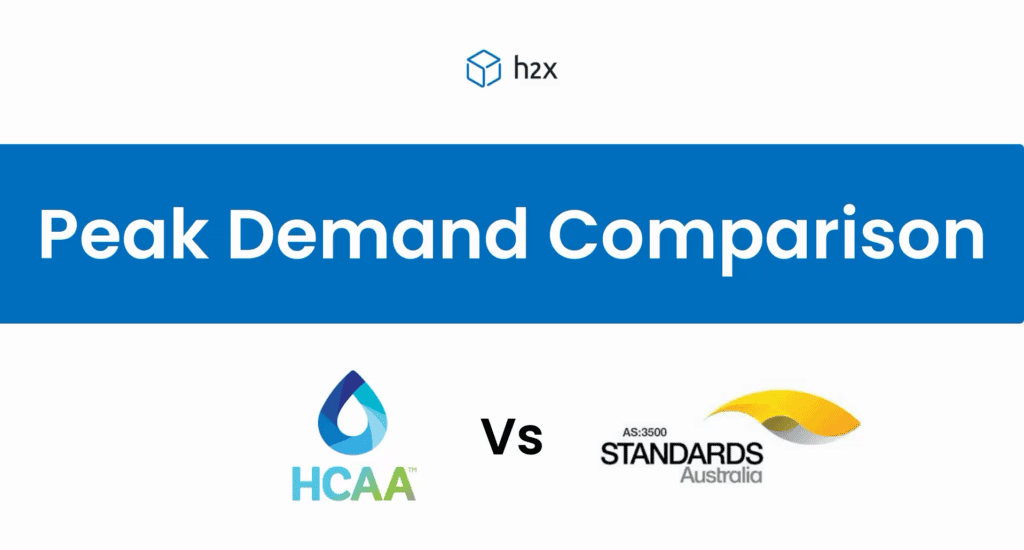
Introduction
Hydraulic engineering is on the brink of a significant evolution thanks to new research by Deakin University in collaboration with the Hydraulic Consultants Association of Australasia (HCAA).
This transformative study has re-evaluated peak flow rate calculations through comprehensive real-life data monitoring of four buildings, varying from 115 to 330 apartments in size.
Traditional water system sizing methods, once deemed accurate, are now considered severely outdated and inaccurate.
Real-life peak flow rates are, in fact, much lower than what was previously anticipated.
The study provides exciting news for hydraulic engineers seeking to design more efficient and cost-effective systems.
Benefits of the HCAA Peak Flow Rate Calculation Method:
- Enhanced accuracy in system designs, leading to correctly sized flow rates
- More efficient systems, allowing for smaller pipes and thus reducing material and energy costs
- A reflection of contemporary water use behaviours and the latest advancements in the industry
The new method, which can be implemented using h2x, starkly contrasts the current AS3500.1 standards.
HCAA Peak Flow Rate Calculation Method vs AS3500.1 – Size Comparison:
For 15 Apartments:
- Peak Flow Rate: The new method suggests a requirement of just 1.41L/s compared to the AS3500.1 suggestion of 2.21L/s
- Main Pipe Size: A reduction is seen with the new method recommending 40mm over the previous 50mm
- Equipment Size: The booster pump, recirculation pump and hot water plant all show reductions in size, indicating a leaner approach to system design
50 Apartments:
- Peak Flow Rate: The new method suggests a requirement of just 2.53L/s compared to the AS3500.1 suggestion of 4.72L/s
- Main Pipe Size: A reduction is seen with the new method recommending 50mm over the previous 80mm
- Equipment Size: The booster pump, recirculation pump and hot water plant all show reductions in size, indicating a leaner approach to system design
100 Apartments:
- Peak Flow Rate: The new method suggests a requirement of just 3.72L/s compared to the AS3500.1 suggestion of 7.55L/s.
- Main Pipe Size: A reduction is seen with the new method recommending 65mm over the previous 10mm
- Equipment Size: The booster pump, recirculation pump and hot water plant all show reductions in size, indicating a leaner approach to system design
HCAA Peak Flow Rate Calculation Method vs AS3500.1 – Cost Comparison:
Based on an estimate using Rawlinson’s supply and install prices, there is an 28.75% cost saving on pipes, valves, and fittings when designing with the HCAA peak flow rate calculation method vs AS3500.1 for a 100-apartment building.
Use the HCAA Peak Flow Rate Calculation Method in h2x:
Here is a comparison video of the HCAA and AS3500.1 calculation methods in h2x.
h2x was engineered by professionals to streamline workflow and ensure precision.
Ready to experience it firsthand? Start your 14-day free trial or book your free demo today!
Further Reading About HCAA Hydraulic:
For those interested in delving deeper into the data and methodology, the full study is accessible at Deakin University’s Research Paper.
h2x: All-In-One Tool for Calculating, Designing, Estimating, and Paperwork

What's in the Pipeline?
Get technical resources delivered to your inbox weekly!
Testimonials
What Installers Say
What Consultants Say
A game changer for the humble plumber. Incredible.
Brad Winkel
Director at Queenstown Plumbing
Brilliant, simple and easy to use. Game changer.
James Major
Director at Hubb
Big time game changer to the industry!
Viv Jude
Director at UHC
Incredible software! Super user-friendly and allows you to save so much time.
Devni Gamage
Engineer at DMA
h2x is great software, our company use it nearly every day. It is easy to use with direct conversion from h2x to Revit.
Callum Craig
Engineer at WDE
h2x is fantastic software. It is very easy to use and the ability to output to Revit is a fantastic time saver.
Joe Kirrane
Engineer at MEP

